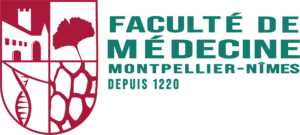PASS - registered students
Teaching, exams, MMOPKI admissions, etc.
Studies in Montpellier & Nîmes
Initial training
Studies in Montpellier & Nîmes
Initial training
SPECIFIC HEALTH ACCESS PATH

On this page, you'll find current information on courses, exams, the MMOP-K-I application process and more.
This page is dedicated to students currently in training.
Please read all the information and documents provided on this site carefully before contacting the school department.
Any questions not answered on the site will not be answered.
Are you a prospective student? For information on PASS access and health studies, visit this page.
We would like to remind you that, in accordance with the French Public Health Code, students wishing to continue their studies in Medicine, Maïeutics, Odontology, Pharmacy, Physiotherapy and IFSI (MMOPKI) must comply with vaccination requirements.
If you are admitted to the 2nd year of a MMOPKI program: any delay in obtaining the required vaccination certificate will suspend your participation in your 2nd year training courses, and you will have to repeat the year (warning: vaccination against hepatitis B takes 7 months).
It is up to you to contact your GP or another doctor at the start of the academic year, without waiting for the results of your exams, to check that you are up to date with these compulsory vaccinations, or to bring them up to date.
You will find all the necessary and useful information concerning the procedures to carry out and the services to contact in the document below:
 https://facmedecine.umontpellier.fr/wp-content/uploads/2025/07/evenement-tuto-parents.png
763
1526
communication
https://facmedecine.umontpellier.fr/wp-content/uploads/2024/06/LOGO-CLASSIQUE-H-300x135.png
communication2025-07-22 11:32:592025-09-02 14:40:05Tuto-Parents event - Friday, August 22, 2025
https://facmedecine.umontpellier.fr/wp-content/uploads/2025/07/evenement-tuto-parents.png
763
1526
communication
https://facmedecine.umontpellier.fr/wp-content/uploads/2024/06/LOGO-CLASSIQUE-H-300x135.png
communication2025-07-22 11:32:592025-09-02 14:40:05Tuto-Parents event - Friday, August 22, 2025

ORGANIZATION AND CURRICULUM OF PASS COURSES

It is made up ofteachingunits(UE) in the health field, representing 49 ECTS, plus, outside the health field, an English UE of 1 ECTS, and disciplinary UEs known as "minor disciplinary UEs", representing 10 ECTS. A total of 60 ECTS to validate the year.
The aim of these minor courses is to enable students who have completed their PASS year (acquiring 60 ECTS) but who have not been admitted to the MMOPKI to continue their studies in the second year of their bachelor's degree. After the PASS, these students will be able to enter the second year of the bachelor's degree corresponding to the disciplinary minors taught in the PASS.
Teaching is organized in 2 forms: lectures (CM) and tutorials (ED), to which can be added hours of tutoring. (find out more about tutoring).
Doing your PASS at the University of Montpellier means working on 3 campuses. The courses offered on the 3 campuses are rigorously identical and are broadcast live in the amphitheaters of all 3 sites. (find out more about the different teaching sites)
Lectures are given in amphitheaters in the morning on each of the alternating teaching sites (1 transmitting site and 2 receiving sites) and are systematically recorded. The lectures are rebroadcast in the afternoon for the second group of students. They are made available on MOODLE in the afternoon. PASS lectures start at the beginning of September.
Supervised Teaching (ST) is given in small groups, taking over from the lectures for more in-depth study and competition practice by solving multiple-choice questions.
In the second semester, students must apply for MMOP and K (find out more + about MMOPK admission and application procedures)
EXAMINATION SCHEDULE AND TESTING PROCEDURES

On this page you'll find all the information you need to prepare for your exams, including regulations, timetables and jury panels.
Please read all the information and documents provided on this site carefully before contacting the school department.
Any questions not answered on the site will not be answered.
Composition of the PASS jury
Decision appointing the PASS Board of Examiners
Calendar of PASS-LAS exams, juries and orals
This calendar informs you of the main dates you need to know to make your year run smoothly.
These include the dates of PASS exams and juries, the UE Santé Commune de LAS, and the dates of admission juries, orals and MMOP assignment amphitheaters.
The actions you need to take, depending on your situation, or for which you will receive direct information by e-mail, are shown in red, with the students concerned in the left-hand column.
For example, you'll need to plan to register for parcoursup in January to anticipate a possible reorientation, apply for health courses in March, complete (for PASS students only) the questionnaire for future LAS2 assignments in May, and so on.
Each step requiring action on your part will be accompanied by an information e-mail. So once again, please remember to check your University of Montpellier mailbox regularly !
Practical information exam organization
You should carefully read the information below concerning the organization of examinations.
Teaching, Study and Examination Regulations
Regulations governing teaching, studies and examinations (R3E) approved by the school's Commission Formation Vie Universitaire (CFVU) on June 17, 2025
UE10 (English), UE Santé Commune (SHS, PHG and MAPS), UE1, UE2 and UE3
UE5 (editorial question)
Disciplinary minor courses
REACT - BOUNCE BACK - SUCCEED

FOR PASS STUDENTS

FOR PASS STUDENTS

On this page, you'll find all the information you need about MMOP-K-I admissions, including regulations, timetables and jury panels.
Please read all the information and documents provided on this site carefully before contacting the school department.
Any questions not answered on the site will not be answered.
Vaccination requirements
We would like to remind you that, in accordance with the French Public Health Code, students wishing to continue their studies in Medicine, Maïeutics, Odontology, Pharmacy, Physiotherapy and IFSI (MMOPKI) must comply with vaccination requirements.
If you are admitted to the 2nd year of a MMOPKI program: any delay in obtaining the required vaccination certificate will suspend your participation in your 2nd year training courses, and you will have to repeat the year (warning: vaccination against hepatitis B takes 7 months).
It is up to you to contact your GP or another doctor at the start of the academic year, without waiting for the results of your exams, to check that you are up to date with these compulsory vaccinations, or to bring them up to date.
You will find all the necessary and useful information concerning the procedures to carry out and the services to contact in the document below:
Calendar of PASS-LAS exams, juries and orals
This calendar informs you of the main dates you need to know to make your year run smoothly.
MMOP jury members
Decision to appoint the MMOP Jury
Admission to MMOP-K-I
The terms and conditions for admission to MMOP 24-25 were approved by the CFVU on September 24, 2024.
Click here to find out how to apply for admission to a physiotherapy school:
Information on admission procedures and capacity is available here :
How to apply for MMOP-K-I
All PASS students must complete this procedure and indicate their choice of application.
From March 1st to March 31st, 8:00 p.m. (Paris time), please follow the steps indicated in the support below.
Special features Kinesitherapy branch:
If you wish to apply for this stream in LAS2, you must apply during your PASS year, even if you do not have the prerequisites.
Please note: applications for the Kinesitherapy stream are made automatically to the 2 institutes, Montpellier and Perpignan.
The terms and conditions for joining the 2nd year IFSI 24-25 were presented to you at the information meeting on January 29, 2025. The presentation of this meeting is available on Moodle (UM ENT) under "General Information".
Special features MMOP courses (Medicine, Maieutics, Odontology and Pharmacy) :
Administrative enrolment in the PASS program automatically implies application to the 4 MMOP programs - this application is therefore pre-ticked for all PASS students. Application is automatic for all MMOP courses and teaching sites.
Note: MMOP applications are automatically processed for all MMOP courses and teaching sites.
The final choice of health stream and teaching site/institute will be made at the assignment amphitheatre, based on MMOP-K ranking and capacity for each stream.
MMOP-K assignment amphitheaters
At the end of the2nd group of exams, as part of the final choices of MMOP-K admission and teaching site (if applicable), the Amphi d'Affectation will take place on July 09 and 10, 2025 in person at the Faculté de Médecine Montpellier-Nîmes campus santé ADV (641 avenue Doyen Gaston Giraud 34090 Montpellier).
A nominative convocation including the exact day and time will be sent by e-mail (on the Université de Montpellier student e-mail service) to the students concerned (from July 02, 2025).
You are obliged to respect the day and time of your convocation, and no group changes can be made.
! Students must attend the Assignment Amphitheatre!
However, in the event of force majeure, students may be represented by a proxy.
To do so, students must follow the following procedure:
- complete and sign the attestation on honour for power of attorney downloadable below
- attach the following documents to the certificate:
The proxy must present himself/herself at the Amphi d'Affectation in accordance with the convocation received by the student, with all these documents in paper format as well as the convocation of the student concerned by the proxy.
In addition, the student must send an e-mail to mmop-admissions@umontpellier.fr before the day of the meeting, the proxy certificate and the requested documents.
Reminder: A proxy can only represent one student (one proxy per student).
Students may, if they wish, set up several proxies (appoint several people as proxies), but only 1 of these proxies will be able to enter the assignment lecture hall and make the admission choice. This proxy must be in possession of all the documents listed above, as well as the convocation of the student concerned by the proxy.
However, we would like to remind you of the importance of appointing a support person.
PREPARING FOR THE SECOND YEAR OF POST-BAC STUDIES

At the end of the PASS year, if you are not admitted to the MMOPKI, the continuation of your academic career will depend on your PASS results and your personal plans.
In the event of non-admission to the MMOPKI, there are 4 possibilities, some of which should be anticipated as early as January of the current year:
No repetition possible in PASS
Reorientation in "classic" Licence 1 via Parcoursup (no possibility of reorienting in LAS1!)
It's done from January to March via Parcoursup, so plan ahead!
Continuation of studies in LAS2 as part of the PASS option chosen in Parcoursup.
Rightful place in LAS2 of your PASS option, Moodle questionnaire to be completed in May (no response to questionnaire = no place in LAS2 of your option).
Geographical assignment by the subject minor's pedagogical managers (according to intake capacity, your results and your wishes entered in the Moodle questionnaire).
Final assignments, procedures and registration dates for LAS2 will be announced around mid-July.
Reorientation in LAS2 outside the PASS option.
This is done via ecandidat, and you need to contact the school departments of the LAS2s you wish to join to find out the exact procedure and deadlines.
With no certainty of a favorable admission.
Below is a list of the various LAS2 programs offered by the University of Montpellier (some are not open to PASS students).
Exit from the MMOP-K-I MMOP-K-I or continuation of the project in an academy other than Montpellier.
It's up to you to find out about the admission procedures for the courses you wish to enroll in.


REGISTRATION CANCELLATION & REFUND REQUEST

Have you changed your mind and want to cancel your registration? Please take the time to read the information below to find out how.
PASS cancellation requests must be sent by September 30 of the current year at the latest to the school department of the registration site (e-mail address in the cancellation form, see "procedure" below).
PASS cancellation requests sent by September 30 of the current year will not be deducted from an MMOP application.
Any PASS cancellation request sent after September 30 of the current year cannot be processed under any circumstances and the MMOP application will be deducted (in accordance with the order of November 04, 2019).
When you enrolled, you paid your tuition fees and have since become a CROUS or French government scholarship holder, obtained apprentice status or are a ward of the nation, so you can apply for a refund.
Please take the time to read the information below to find out how it works.
Requests for reimbursement of enrolment fees must be sent by August 31 of the current year at the latest to the school department of the enrolment site (e-mail address on the request form, see "procedure" below).
I'd like to use a customary first name. What should I do?
You can request the use of a customary first name by completing the form requesting the use of a customary first name.
SCHOOL SERVICES IN MONTPELLIER, NIMES

Chairman of the PASS Jury
Prof. Stephan Matecki
Chairman of the MMOP Admission Jury
Dr Pierre-Yves Collart-Dutilleul
We use cookies to provide the services and features offered on our site and to improve our users' experience. Cookies are pieces of data that are downloaded or stored on your computer or other device. By clicking on "I accept", you agree to the use of cookies. You can always deactivate them at a later date.
I acceptWe may request that cookies be set on your device. We use cookies to let us know when you visit our websites, how you interact with us, to enrich your user experience, and to personalize your relationship with our website.
Click on the category headings to find out more. You can also change some of your preferences. Please note that blocking certain types of cookies may affect your experience on our websites and the services we are able to offer.
These cookies are strictly necessary to provide you with the services available on our site and to use some of its functions.
As these cookies are absolutely necessary for the proper functioning of the site, refusing them will have an impact on the way it functions. You can always block or delete cookies via your browser options and force them to be blocked on this site. However, the message asking you to accept/refuse them will reappear each time you visit our site.
We respect your choice to refuse cookies, but to avoid asking you on every page, let us use one to remember your choice. You are free to change this choice at any time to improve your browsing experience. If you refuse cookies, we will remove all cookies from this domain.
We provide you with a list of cookies deposited on your computer via our domain, so you can see what is stored there. For security reasons we cannot show or display external cookies from other domains. These can be accessed via your browser options.
These cookies collect information in aggregate form to help us understand how our site is used and how effective our marketing activities are, or to help us personalize our site to improve your browsing experience.
If you do not want your visit to our site to be tracked, you can block tracking in your browser here :
We also use various external services such as Google Webfonts, Google Maps and other video hosts. Since these ISPs are likely to collect personal data such as your IP address, we allow you to block them here. Please be aware that this may greatly reduce some of our site's functionality. Changes will be applied after reloading the page.
Google font settings :
Google Map settings :
reCAPTCHA settings :
Vimeo and Youtube video integration :
The following cookies are also required - you can choose to allow their use:
You can read more about cookies and privacy settings on our Legal Page.
Privacy policySelf-guided tours are only available during public opening hours:
SUMMER OPENING HOURS
April 1 to September 30: 12 am to 8 pm except Mondays.
WINTER SCHEDULES
October 1 to March 31: 11 a.m. to 6 p.m. except Mondays.
This form provides us with the information we need to keep track of group attendance at the Jardin des Plantes. It also provides us with the information we need to compile statistics on visitor numbers.
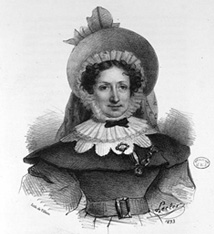
Marie-Anne GILLAIN was born in Montreuil near Versailles in 1773.
She is sent to board with the Visitation nuns.
During the French Revolution, she took refuge in Etampes, with a relative who was Mother Superior of the Hospitalières de l'Hôtel-Dieu.
There, she took lessons from the surgeon and worked for two and a half years, from 1793 to 1796, as a "dame hospitalière", i.e. a laywoman offering her services voluntarily to the poor sick.
In 1797, she returned to Versailles to marry Louis BOIVIN, sous-chef de bureau at the Domaines nationaux.
Soon pregnant, she found herself brutally widowed in 1798, at the age of 25, with no resources and a little girl to raise.
She then decided to make the most of the training she had received from the surgeon at the Hôtel-Dieu d'Étampes, and was admitted to the Maternité midwifery school in 1799.
In 1800, she obtained her diploma and moved to Versailles to be with her daughter and practice her profession.
In 1801, following the death of her daughter, she obtained permission from Marie-Louise Lachapelle to return to the Hospice de la Maternité.
In 1803, she was appointed head supervisor of the nursing section. She held this position for eleven years, until 1814. During this long stay, she took the opportunity to attend classes given by her protector, the Maternity Hospital surgeons (Baudelocque, then Dubois) and the chief physicians (Andry, and above all Chaussier), whose observations and lessons she absorbed.
In 1812, she wrote and published a Mémorial de l'art des accouchements. It was approved by the Ministry of the Interior, which made it one of the manuals given to laureates of the Maternity Hospital.
In 1814, her position as supervisor was abolished and she was dismissed, with a gratuity equivalent to the value of her annual salary, i.e. 360 francs.
In October, she obtained a position as storekeeper and bursar at Poissy General Hospital, which she held until January 1819, when the hospital was converted into a prison.
Little is known about this period of her life: did she continue her obstetric practice despite her new, more administrative duties? Did she do so within the framework of the general hospital? Or in the context of a private practice? In any case, for a time she seemed to enjoy a comfortable salary of 1,200 francs a year, almost as much as the Maternité's master midwife.
In 1818, she competed anonymously for the Prix d'Emulation of the Société de Médecine de Paris, presenting a dissertation on internal hemorrhage of the uterus. She won the medal.
On February1, 1819, she joined the Maison Royale de Santé in Paris as chief midwife supervisor, with the modest salary of 350 francs/year.
In 1821, an opportunity for promotion presented itself when Marie-Louise Lachapelle died.
The General Council of the Hospices must, according to procedure, propose to the Minister of the Interior a list of five candidates to succeed the illustrious midwife.
On November 14, 1821, the Council voted on a list with Marie-Anne Boivin in first place; she obtained 12 votes out of 12 in the first ballot to appoint the first woman.
A month and a half later, the Minister of the Interior endorsed the Council's choice.
But the winner refused the position (or rather resigned), forcing the board to propose another list. Why this refusal? All contemporary biographers explain this decision by the public promise Marie-Anne Boivin made to her former patroness never to replace her, even after her death. If so, she kept her word and another midwife, Madeleine Catherine Legrand, was appointed in 1822.
Marie-Anne Boivin continued to work at the Maison Royale de Santé, where she accumulated observations, publications and awards.
In 1828, she presented a dissertation on spontaneous abortions, which was awarded a prize by the Bordeaux Medical Society.
In September 1835, at the age of 62, worn out and tired, she retired, and urged the hospice board to pay her a pension. Finally, after a first attack that left her hemiplegic, she died in May 1841.
In 1902, one of the rooms in the renovated Maternité was named after Marie-Anne Boivin.
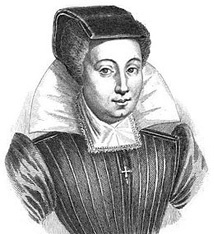
She was born in 1563 on Boulevard Saint Germain or in Mons into a family of doctors.
In 1594, she married Martin BOURSIER, a master surgeon and student of Ambroise PARÉ.
She was left destitute when her husband joined the king's armies.
She soon gained renown among the ladies of the court, and delivered the queen six times.
She is paid 500 crowns for the birth of a boy and 300 for the birth of a girl.
It lost its renown following the death of Marie De BOURBON-MONTPENSIER, wife of Gaston d'ORLÉANS, at the birth of La Grande Mademoiselle.
According to the surgeons who performed the autopsy, the cause of death was placental debris in the uterus, and Louise Bourgeois was accused of negligence.
At the time, male obstetricians were few and far between, and were trying to take over from the midwifery fraternity.
Louise questions their competence by violently criticizing the autopsy findings and the skills of the obstetricians; however, her response has the opposite effect to that intended, by giving them publicity.
She was the first midwife to write a book on obstetrics, Observations diverses sur la stérilité, perte de fruits, fécondité, accouchements et maladies des femmes et enfants nouveau-nés, published in 1609.
In this book, she points out that the couple's sterility can be of male origin, even if, like doctors of the time, she confuses procreative ability with sexual vigor.
She identified the role of malnutrition on fetal health, and was the first to prescribe the administration of iron to treat anemia.
She emphasized the importance of anatomical knowledge for midwives, and begged doctors to allow them to attend lectures and dissection sessions.
In 1636, Parisian midwives petitioned the Faculty of Medicine to allow Louise Bourgeois to teach them obstetrics, but were refused.
However, one of his students, Marguerite du Tertre de la Marche, was later appointed head of midwifery at Hôtel Dieu, and succeeded in overhauling the content of their training.
She died on December 20, 1636 on Boulevard Saint Germain at the age of 73.

He was born on November 30, 1745 in Heilly, Picardy.
He was the son of Jean Baptiste BAUDELOCQUE, surgeon, and Anne Marguerite LEVASSEUR. His brothers Félix Honoré (1744-1794) and Jean Baptiste (1749-1800) were both physicians. He was the third of ten children.
It was his father who introduced him to surgery in rural Picardy.
He completed his studies in Paris at the Hôpital de la Charité, where a renowned obstetrics master, Solayrès de Renhac (1737-1772), officiated.
In 1772, after Solayrès's untimely death at the age of 35, Baudelocque collected the manuscripts of his lectures and took over the teaching of obstetrics at the Hôpital de la Charité. Thanks to Baudelocque, Solayrès' work has escaped oblivion.
In 1775, at the instigation of surgeon Augier du FOT, a childbirth demonstrator in Soissons, he published the first edition of a manual for midwifery training, using manuscripts bequeathed by Solayrès de RENHAC. This work was later published a second time under his own name, under the title " Principes sur l'art des accouchemens par demande et réponses en faveur des élèves sages-femmes". It was republished three times during Baudelocque's lifetime, and three times posthumously.
In 1776, following the defense of his thesis on symphysiotomy " An in partu propter angustiam pelvis impossibili, symphysis ossium secanda?", he was appointed surgeon at the Hôpital de la Charité, Paris, and received the title of Master of Surgery from the Collège de chirurgie de Paris.
On April 5 or 6, 1777 in Paris, he married Andrée DERULLIER (de Vulier, de Voulier, de Rullie, de Rouillier), whose family made mannequins of pregnant women for demonstrations in birthing classes. She died on January 4, 1787, childless.
In 1781 and 1789, he published the first two editions of his learned treatise " L'Art des accouchemens" in two volumes. He became famous for his forceps, his practice of Caesarean section and his invention of the pelvimeter, which measures the external anterior-posterior diameter of the uterus, in order to identify patients who might have difficulty giving birth.
On September 14, 1788 in Amiens, he married Marie Catherine Rose Laurent, and the couple had five children (3 girls and 2 boys).
During the French Revolution, guilds and faculties were abolished. Hospitals lost some of their staff and funding. Nevertheless, Baudelocque managed to build his reputation as an obstetrician thanks to a clientele in town and private obstetrics courses.
In 1794, the former Faculty of Medicine was replaced by the École Centrale de Santé de Paris, where he was in charge of courses for medical students and midwives.
In October 1795, the Hospice de la Maternité welcomed poor women and young mothers for childbirth, and provided clinical training for midwives and doctors at the École de Santé.
It also takes in abandoned children.
In 1798, Baudelocque, in addition to his position as Professor of Obstetrics at the Ecole de Santé de Paris, became Surgeon-in-Chief of the Maternity Hospital.
In 1802, the Hospice de la Maternité school was created, where Baudelocque deployed his teaching talents, using mannequins to practice obstetrical examinations and maneuvers. He favored observation over action, preferring to let nature take its course and using instruments as little as possible.
Busy with his many duties, he delegated some of his authority to the Maternité's head midwife, Marie-Louise Lachapelle (1769-1821), who taught the student midwives and was authorized to use forceps alone in difficult deliveries.
He was embroiled in a resounding lawsuit brought against him by Jean François SACOMBE, an obstetrician and fierce opponent of Caesarean section and defender of traditional midwifery practices. Sacombe, who had set himself up as a defender of midwives, accusing Baudelocque of infanticide, ended up losing his case in 1804 and, with it, all sense of proportion.
In 1806, Napoleon appointed Jean-Louis Baudelocque to the chair of obstetrics, the first medical specialty chair in France.
He became the obstetrician to the queens of Spain, Holland, Naples and all the ladies of the court.
He had been chosen in advance to give birth to the heir awaited by Napoleon and Empress Marie-Louise of Austria. But, struck down by cerebral congestion, he was not to see the birth of the King of Rome.
He died on May 2 or 3, 1810, at 16 rue Jacob in Paris (6th arrondissement), aged 65, where he had been living.
He was buried in Vaugirard's western cemetery, then exhumed due to expropriation for the construction of today's boulevard Pasteur.
He was buried on August 17, 1839 in the Père-Lachaise cemetery (45th division).
He was the most famous obstetrician of his time.
A doctor at the Hôpital des Enfants malades, he left his name to the Clinique Baudelocque in 1890.
In 1966, the Port-Royal maternity hospital was built. The two merged in 1993 (Paris 14th).
Today, on Avenue Denfert-Rochereau, there is a midwifery school bearing her name.
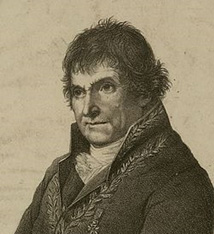
He was born on July 2, 1746 in Dijon, in the parish of Saint Pierre.
His father was a master glazier.
After attending the Dijon hospital, his mother sent him to Paris to continue his medical studies, and he enrolled at the Collège Royal de Chirurgie, where he attended regularly from 1765 to 1767, studying anatomy under Raphaël SABATIER and Jean-Joseph SUE.
At the same time, he was being introduced to surgery at de Lafaye's clinics and, in the afternoon, at Isaac GOURSAUD's.
His years as a surgeon came to an end in 1768, when he was awarded the title of Master of Surgery.
He married Jeanne CARRE, daughter and granddaughter of a master surgeon, on July 27, 1767 in Quetigny, Côte d'Or. Together they had a son, Bernard François Hector (1769-1837).
In 1769, he opened a free course in human and comparative anatomy, which was followed by many students for over ten years.
In 1774, the States of Burgundy had created a chemistry teaching program with Louis-Bernard GUYTON de MORVEAU as full professor and Hugues MARET and François CHAUSSIER as assistants. When MARET died in 1786, he was promoted to second professor of chemistry.
In Dijon, his professional qualities won him the favor of his clientele, and his reputation quickly spread beyond Burgundy. He made a name for himself at the Académie de Chirurgie with several communications, and was awarded the Académie's Gold Medal at the public session of April 10, 1777.
He was awarded his Doctorate in Medicine from the University of Besançon on January 14, 1780, and in 1784 became a correspondent of the Société Royale de Médecine. That same year, he was admitted to the Académie des Sciences, Arts et Belles-Lettres de Dijon, where he became Secretary General following Guyton de Morveau's retirement.
In 1785, at the request of the States of Burgundy, he published a popular instruction on rabid animal bites: "Méthode de traiter les morsures des animaux enragés, et de la vipère; suivie d'un précis sur la pustule maligne" (with Joseph Enaux 1726-1798).
In 1789, he published a study on the muscles of the human body, in which he proposed a more rational classification than that hitherto taught: "Exposition sommaire des muscles du corps humain suivant la classification et la nomenclature méthodiques adoptées au cours public d'anatomie de Dijon"; this work was republished in 1797.
On December 20, 1789, he read a paper for the Dijon Academy entitled "Observations chirurgico-légales sur un point important de la jurisprudence criminelle" (Surgical-legal observations on an important point of criminal jurisprudence), in which he demonstrated the role that physicians could play in enlightening the judiciary; this work was well received, and the following year he opened a course in Legal Medicine in Dijon.
On 3 nivôse an III (December 23, 1794), he married Angélique LABOREY in Dijon (Section du Crébillon), and they also had a son Franck Bernard Simon (1804-1866).
In 1794, Antoine-François Fourcroy was commissioned by the National Convention to reorganize medical education, and he sought out someone who could suggest the details of this organization. Claude-Antoine Prieur-Duvernois, from the Côte-d'Or, who was in charge of Science and Arts Education at the Comité de salut public, pointed him in the direction of François Chaussier, who joined the Comité de l'Instruction Publique: he drew up a report and a draft decree, which he read at the Convention on 7 frimaire de l'an III (November 27, 1794); in it, he proposed the creation of a single "Ecole centrale de Santé" in Paris; the members of the Convention, broadly open to decentralization, asked for the creation of other similar schools in Montpellier and Strasbourg, and it was on this basis that the report was adopted on 14 frimaire (December 4).
Chaussier returned to Dijon, where he resumed his courses and studies, as well as the missions he had been entrusted with: in April 1793, he had been appointed physician to the Dijon Hospices and Prison Surgeon; he did not remain there for long, however, as he was recalled to Paris to take up the chair of anatomy and physiology at the Ecole de Santé. Chaussier was, in the words of Joseph-Henri Réveillé-Parise, the most famous professor of physiology at the Ecole de Paris: he defended vitalism as the basis of all physiological studies.
A decree of 7 Vendémiaire An III (September 28, 1794) officially created the École Centrale des Travaux Publics, the future École Polytechnique, and less than a month after its opening, the Board of Governors proposed installing an infirmary and appointing a "health officer" (a revolutionary designation for doctors) to care for sick students and give lessons on "the art of preventing illness and alleviating it". The following year's list of Ecole Polytechnique staff includes him as assistant to Claude Louis Berthollet, "in charge of the Zootechnie and Salubrity course, and as the School's Physician": in fact, he taught Berthollet's course during his absence in Italy in 1796-1797. After the regularization of chemistry teaching, Chaussier seems to have abandoned the teaching of this science and confined himself almost entirely to his duties as physician.
In 1799, "Les tables synoptiques" was published to great acclaim. They provide a summary of the physiology, pathology and therapeutics of the various anatomical systems of the human body.
On May 9, 1804, he was appointed Hospice Physician at the Maternity Hospital, and was entrusted with the presidency of the medical juries for the Health Officer, Pharmacist and Midwife examinations for the district of the Paris Faculty of Medicine.
He was a member of the commission appointed by the Minister of the Interior in October 1810 to study "secret remedies", alongside André Marie Constant Duméril, Jean-Joseph Menuret and Nicolas Deyeux.
In 1815, after the fall of the First Empire, he was replaced as doctor at the Ecole Polytechnique, but he held his chair at the Faculty until November 21, 1822, when the Restoration changed the organization of the Faculty: he was named honorary professor and his chair was withdrawn. He was bitterly disappointed, and the next day suffered a stroke that temporarily left him unable to walk or talk. He recovered, however, but remained hemiplegic, which did not prevent him from continuing his work at the Maternity Hospital.
On May 6, 1823, he was admitted to theAcadémie des Sciences.
Between 1824 and 1827, he published several works on forensic medicine: "Manuel médico-légal des poisons, précédé de considérations sur l'empoisonnement" ("Forensic manual on poisons, preceded by considerations on poisoning").14Recueil de mémoires, consultations, et rapports sur divers objets de médecine légale" ("Collection of memoirs, consultations and reports on various subjects of forensic medicine")15Mémoire médico-légal sur la viabilité de l'enfant naissant, présenté à Mgr le garde des sceaux, ministre de la Justice" ("Forensic report on the viability of newborn babies, presented to the Minister of Justice")16
François Chaussier died of a stroke at his Paris home on June 19, 1828, aged 81.
He was buried in Père-Lachaise Cemetery (18th division) on June 21: Nicolas-Philibert Adelon delivered a speech on behalf of the Académie, Marie-Alexandre Désormaux, representing the Faculté, did the same, and Duméril, on behalf of the Académie Royale des Sciences, read a long eulogy.
Don2nd son, Franck CHAUSSIER followed in his father's footsteps, defending his doctoral thesis in Montpellier in 1827.
He is a French physician, professor at the Paris Faculty of Medicine, member of the Académie royale de médecine and the Académie des sciences.
Chaussier was the main editor of theEncyclopédie méthodique's articles on pharmacy.13.
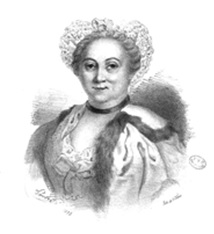
She was born in Clermont-Ferrand in 1712 into a family of doctors.
For three years, she was a pupil of Anne BAIRSIN, a master midwife.
In 1739, on September 26, she received her diploma and soon after became a sworn midwife.
She worked as a master midwife at Le Châtelet in Paris for sixteen years.
In 1752, to combine practice with theory, she published a book entitled "Abrégé de l'Art des accouchements".
In 1754, she returned to Auvergne and began giving free lessons.
In 1758, she designed her famous demonstration "machine" (made of wood, cardboard, cloth and cotton), which was approved on December1 by the French Academy of Surgery.
During the two-month training course, students were invited to practice on the mannequin.
She died in Bordeaux on April 16, 1794 at the age of 79, destitute and alone, her niece and husband being absent. There is a rue Angélique du Coudray in Thorigné-Fouillard and a rue Madame-du-Coudray in her native Clermont-Ferrand. The maternity ward at Melun hospital (77) also bears her name.
